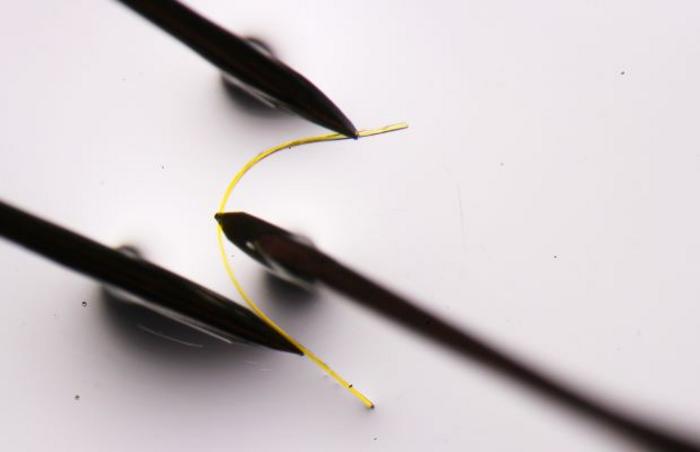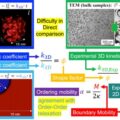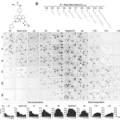
Australian researchers have achieved significant breakthroughs in understanding the intrinsic properties of flexible crystalline materials, paving the way for potential advancements in the fields of building materials, electronics, and various technologies. The research team, which includes experts from The University of Queensland (UQ) and Queensland University of Technology (QUT), focused their investigation on the elastic behavior of fine crystals known for their flexibility and unique characteristics. This study aims to uncover the mechanics behind how these materials can return to their original form after deformation.
In their experiments, the research team utilized innovative approaches to bend and manipulate flexible crystals. Among the materials studied was a remarkable crystal developed at UQ, which possesses the extraordinary ability to be tied in knots without compromising its structural integrity. This unique behavior provides researchers with valuable insights into the underlying molecular interactions that contribute to these materials’ elasticity.
Professor Jack Clegg, a prominent figure in the study, explained that the research sought to determine the source of the restoring force that allows elastic crystals to revert to their original shape. By investigating how different intermolecular interactions function under varying degrees of strain, the team was able to forge new understandings of energy storage within these materials. The implications of this research span numerous applications in modern technology, including the creation of novel hybrid materials that could have significant roles in engineering, aerospace, and construction.
A central component of the research involved conducting experiments that assessed how potential energy is stored within the crystals during manipulation. These investigations revealed that when the crystals are subjected to bending, the energy that enables them to revert to their original size is derived from changes in molecular interactions. Specifically, Professor Clegg noted that the molecules within the crystal undergo reversible rotational and reorganizational changes when exposed to strain, leading to differential energy storage on the inner and outer segments of the bend.
The findings of this study demonstrate that the capacity for energy storage in flexible crystals can be substantial. Remarkably, the research showed that the energy stored within these materials is sufficient to lift objects weighing up to 30 times the weight of the crystal by a distance of one meter. Such a discovery not only illustrates the potential of these crystals but also suggests various commercial and practical applications for materials exhibiting similar properties.
Professor John McMurtrie from QUT emphasized the broader implications of this research methodology. He highlighted the potential for applying similar techniques to investigate elasticity in a vast array of flexible crystalline materials, of which there exist millions, with many more yet to be discovered. This systematic exploration could dramatically enhance our understanding of elasticity and its essential role in both natural and man-made structures.
Elasticity exists at the core of numerous biological and mechanical systems. It facilitates movement in various organisms and provides structural support to skyscrapers and other architectural marvels. For thousands of years, humans have harnessed the properties of elastic materials for a wide range of applications, demonstrating a profound reliance on this phenomenon in daily life and industrial processes. However, the research team’s work sheds light on the molecular underpinnings of elasticity and offers a deeper appreciation of the governing principles behind these critical materials.
Given the transformative potential of this research, the team is excited about the numerous possibilities for future exploration. There are countless types of crystalline materials to investigate, many of which may exhibit novel elastic behaviors yet to be fully understood. The knowledge gained from this research could prompt further studies into innovative materials, catering to the growing demands of industries requiring durable and flexible components.
Researchers are optimistic that the discoveries made in this study will inspire new designs and applications across various fields. With the underlying molecular mechanisms of elasticity now more clearly defined, engineers and material scientists may be better equipped to create materials that enhance existing technologies or enable the development of entirely new ones.
The implications of this research extend beyond theoretical considerations and venture into the realm of practical applications. The energy-efficient and versatile properties of flexible crystalline materials might transform the way we design components for everything from spacecraft to everyday electronic devices, driving the future of intelligent design and sustainable technology.
As the academic and research community continues to delve into this exciting area of study, the collaborations between institutions like UQ and QUT will undoubtedly yield further breakthroughs that can enrich our understanding of materials science and its intersection with everyday life.
This research not only challenges existing paradigms but also underscores the potential for interdisciplinary cooperation in solving complex scientific questions. As these scientists work together to unlock the secrets of elasticity, the scientific community eagerly anticipates the innovations that will arise from their findings.
Moving forward, this study’s impact on our understanding of elasticity will reverberate through academia, industry, and beyond, driving advancements that may reshape our interaction with materials in the 21st century.
Subject of Research: Elastic behavior of flexible crystalline materials
Article Title: On the origin of elasticity in molecular materials
News Publication Date: 21-Feb-2025
Web References: Nature Materials DOI
References: Not applicable
Image Credits: Credit: The University of Queensland
Keywords
Flexible materials, elasticity, crystalline structures, energy storage, molecular interactions, advanced materials, applications, experimental study, architecture, technology, interdisciplinary research.
Tags: advancements in building materialsapplications of flexible crystals in technologyelastic behavior of crystalsenergy storage in flexible crystalsflexible crystalline materialsflexible electronics researchinnovative approaches to material manipulationmolecular interactions in crystalsQueensland University of Technology researchrestoring force in elastic materialsstructural integrity of crystalline materialsUniversity of Queensland studies









No Comments
Leave a comment Cancel